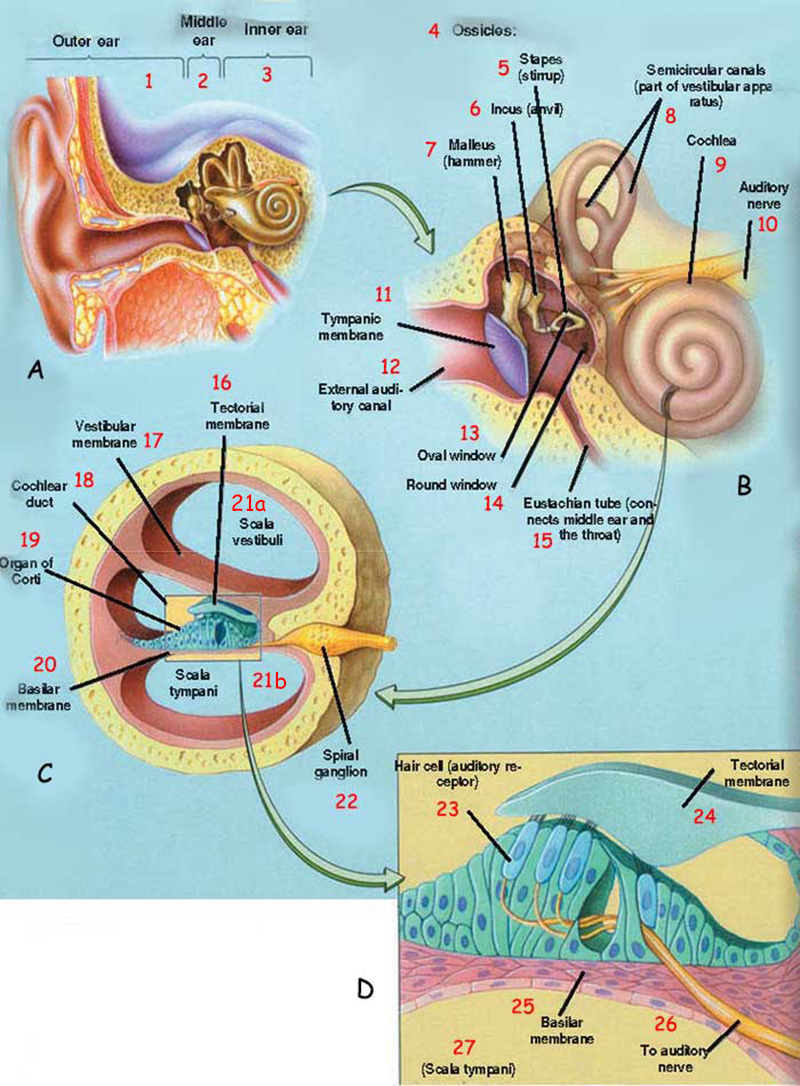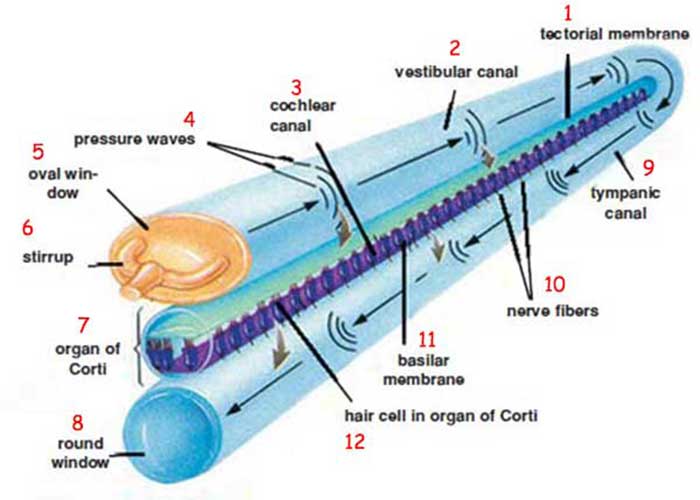Bigotry: The Dark Danger
A Definitive Reply to Evolutionist Propaganda

DOWNLOAD THE BOOK
CHAPTERS OF THE BOOK
- Introduction
- A Series of Blunders Regarding Monkey Intelligence
- The Smuggling Incident National Geographic TV Declined To Cover
- National Geographic TV's Undersea Fairy Tales
- Tall Tales From The National Geographic Channel
- Tales of Transformation from National Geographic Television
- The “Mitochondrial Eve” Deception On The Discovery Channel
- The Dino-Bird Fantasy On The Discovery Channel
- Errors Concerning Human Intelligence From The Discovery Channel
- The Discovery Channel's Spider Dilemma
- Evolutionst Propaganda on The History Channel
- The History Channel's Darwinist and Atheist Propaganda
- New Scientist’s Latest Myth:"Hiccups are a Legacy from Evolution"
- New Scientist’s “ Evolution with Climate” Error
- Paul Davies' Desperate Case for a “Multiverse”
- Evolutionary Tall Tales From The BBC -I-
- Evolutionary Tall Tales From The BBC –II-
- Evolutionary Tall Tales From The BBC –III-
- The BBC's Functionless Tissue Error In Its Documentary The Human Body
- BBC's Evolution of The Human Brain Error
- The Evolutionist Deceptions in the Documentary the Shape of Life
- Evolutionist Deceptions Continue with the Arthropods in the Shape of Life Documentary
- The Evolutionists are Still Struggling with the Same Dilemma: The Origin of Flight
- New Fossil Fish Discoveries Pose a New Dilemma for the Theory of Evolution
- The Latest Version of Baseless Evolutionist Scenarios in Scientific American: Nutrition
- Time Writer M. Lemonick's Mind-Body Error
< <
17 / total: 26
Evolutionary Tall Tales From The BBC –II-The second installment of the documentary, The Human Body, again consisted of evolutionist propaganda devoid of any scientific credibility. The errors in the documentary prepared by BBC are scientifically explained below. BBC's Tall Tale about "Fish Gills Becoming Human Cars"
The BBC documentary maintained that human beings and fish had a common ancestor, and that traces can still be found in the human body which prove this. According to BBC, the human ear is one example of such a trace, and its origin is to be found in the bones beside the gills in the fish, with which we share (!) a common ancestor. This BBC claim rests on the theory of "recapitulation," which has long since been discredited in the scientific literature. Since this matter has already been dealt with in the article "Evolutionary Tall Tales from BBC - I," there is no need to repeat it here. The subject to be considered here is that the human ear possesses such a complex structure that it could never have evolved from a fish bone. The Human Car Possesses Irreducible ComplexityThe significance of the irreducible complexity possessed by the human ear is this: The human ear is made up of several separate parts all coming together, and we are able to hear as a result of all these parts' working in harmony together. If one of these components is deficient, then we either become deaf or else our sense of hearing suffers serious damage. It is impossible for an organ possessing irreducible complexity to develop by stages, by chance, in a process of evolution. A brief résumé of how hearing actually takes place will enable this fact to be more clearly understood. As is commonly known, the hearing process begins with vibrations in the air. These vibrations are enhanced in the external ear by about 17 decibels.1 Sound intensified in this way enters the external auditory canal. This is the passageway leading from the external ear to the eardrum. One interesting feature of the auditory canal, which is some three and a half centimeters long, is the wax it constantly secretes. This liquid contains an antiseptic property which keeps bacteria and insects out. Furthermore, the cells on the surface of the auditory canal are aligned in a spiral form directed towards the outside, so that the wax always flows towards the outside of the ear as it is secreted. Sound vibrations that pass down the auditory canal in this way reach the eardrum. This membrane is so sensitive that it can even perceive vibrations on the molecular level. Thanks to the exquisite sensitivity of the eardrum, you can easily hear somebody whispering from yards away. Another extraordinary feature of the eardrum is that after receiving a vibration it returns to its normal state. Calculations have revealed that, after perceiving the tiniest vibrations, the eardrum becomes motionless again within up to four thousandths of a second. If it did not become motionless again so quickly, every sound we hear would echo in our ears.
The eardrum amplifies the vibrations that come to it, and sends them on to the middle ear region. Here, there are three bones in an extremely sensitive equilibrium with each other. These three bones are known as the hammer, the anvil, and the stirrup; their function is to amplify the vibrations that reach them from the eardrum. But the middle ear also possesses a kind of "buffer," to reduce exceedingly high levels of sound. This feature is provided by two of the body's smallest muscles, which control the hammer, anvil, and stirrup bones. These muscles enable exceptionally loud noises to be reduced before they reach the inner ear. Thanks to this mechanism, we hear sounds that are loud enough to shock the system at a reduced volume. These muscles are involuntary, and come into operation automatically.
The middle ear, which possesses such a flawless design, needs to maintain an important equilibrium. The air pressure inside the middle ear has to be the same as that beyond the eardrum—in other words, the same as the surrounding atmospheric air pressure. But this balance has been thought of, and a canal between the middle ear and the outside world allowing an exchange of air has been built in. This canal is the Eustachian tube, a hollow tube running from the inner ear to the oral cavity. The process whereby these mechanical motions begin to be turned into sound begins in the area known as the inner ear. In the inner ear is the cochlea, a spiral-shaped organ filled with liquid. The cochlea is linked to the stirrup bone by a membrane. By this connection, the mechanical vibrations in the middle ear are sent on to the liquid in the cochlea. The vibrations which reach the liquid in the cochlea set up wave effects in it. The inner walls of the cochlea are lined with small hair-like structures, called stereocilia, which are affected by this wave effect. These tiny hairs move strictly in accordance with the motion of the liquid. If a loud noise is emitted, then more hairs bend in a more powerful way. Every different frequency in the outside world sets up different effects in the hairs.
But what is the meaning of this movement of the hairs? What can the movement of the tiny hairs in the cochlea in the inner ear have to do with listening to a concert of classical music, recognizing a friend's voice, hearing the sound of a car, or distinguishing the millions of other kinds of sounds? The answer is most interesting, and once more reveals the complexity of the design in the ear. Each of the tiny hairs covering the inner walls of the cochlea is actually a mechanism which lies on top of 16,000 cells. When these hairs sense a vibration, they move and push each other, just like dominos. This motion opens channels in the membranes of the cells lying beneath the hairs. And this allows the inflow of ions into the cells. When the hairs move in the opposite direction, these channels close again. Thus, this constant motion of the hairs causes constant changes in the chemical balance within the underlying cells, which in turn enables them to produce electrical signals. These electrical signals are forwarded to the brain by nerves, and the brain then processes them, turning them into sound. Science has not been able to explain all the technical details of this system. While producing these electrical signals, the cells in the inner ear also manage to transmit the frequencies, strengths, and rhythms coming from the outside. This is such a complicated process that science has so far been unable to determine whether the frequency-distinguishing system takes place in the inner ear or in the brain. Everything we have examined so far has shown us that the ear possesses an extraordinary design. On closer examination, it becomes evident that this design is irreducibly complex, since, in order for hearing to happen, it is necessary for all the component parts of the auditory system to be present and in complete working order. Take away any one of these parts—for instance, the hammer bone in the middle ear—or damage its structure, and you will no longer be able to hear anything. In order for you to hear, such different elements as the eardrum, the hammer, anvil, and stirrup bones, the inner ear membrane, the cochlea, the liquid inside the cochlea, the tiny hairs that transmit the vibrations from the liquid to the underlying sensory cells, the sensory cells themselves, the nerve network running from them to the brain, and the hearing center in the brain—all of these parts must exist in complete working order. The system cannot develop "by stages," because the intermediate stages would serve no purpose. The claim that an organ as complex as the ear should have been constructed in stages by an unconscious process dependent solely on random chance, such as evolution, is both unscientific and irrational. BBC must be aware of this impossibility, since it frequently repeats that this is a miracle that is very difficult to believe, and says: "Evolution shapes our bodies. It is hard to believe that it could bring all this about." BBC's Time ErrorOne of the claims frequently repeated on BBC's documentary is that minute changes combined over time to bring about major transformations, and that this is how evolution, which looks to be impossible at first sight, actually happens. At the root of this argument, which is one of BBC's and other evolutionists' fundamental refuges, lies the assumption that time is a force that can do the impossible. According to this view, it is impossible for a chemical mixture to randomly produce amino acids, proteins, DNA, RNA, and other cell components, and thus a living cell—or, alternatively, for a reptile to turn into a bird—in a short space of time. As time goes on, however, for instance over millions of years, the impossible suddenly becomes possible. Evolutionists describe this time factor as "the accumulation of advantageous coincidences." In other words, a structure will gain a positive feature by means of an advantageous coincidence, another such coincidence will be added to it a few thousand years later, yet another one will happen a few thousand years after that, and at the end, over the course of millions of years, these advantageous coincidences will combine to bring about a major and positive transformation.
Many people may accept this logic without examining it too closely. Yet, it contains a simple but fundamental error. This lies in the concept of "advantageous coincidences being added on to one another." The fact is that there is no mechanism in nature that might be expected to select advantageous coincidences and hold on to them in order to add them to one another. We can clarify what this means with an example that evolutionists also resort to. Some scientists say that the possibility of a protein being synthesized by chance is "less than the probability of a monkey typing out the history of mankind without any mistakes."2 Yet evolutionists still hide behind the idea of time in the face of such inconsistencies. This is the kind of claim they make: "Every time the monkey touches the keyboard it has a one-in-26 chance of hitting the right key. Once it has pressed the right key, this is chosen as the right letter by natural selection. The errors it will commit over the next letter are again chosen by natural selection. In this way, over a period lasting millions of years, a monkey can indeed write a history of mankind." This is the logic that underlies all the time-related claims made by evolutionists. The fact is, however, that, as we have already stated, there is a simple error in this position: There is no mechanism in nature to identify and select which of the keys pressed by the monkey is the right one! There is no consciousness which can say, "OK. This letter is right, let's hold on to it and move on to the next stage." Moreover, neither is there any monkey to touch the keys in nature. That requires consciousness. The evolutionists' argument must be that natural effects such as wind, rain, and earthquakes cause the typewriter keys to move. When we examine the scenario that the cell and all living structures have come about by chance in this more realistic light, we see that we are actually dealing with nonsense. The idea that a single cell emerged by chance—that is, that the millions of tiny coincidences that form the building blocks of the cell occurred at random in an ordered sequence—can be compared to the claim that a giant city emerging solely by natural means, with no constructive force behind it. Rain, earth, and heat would have to combine by chance to form millions of bricks. Then these bricks would have to line up side by side and one on top of the other, under the effects of such things as wind, flood, and earthquake, to make houses, roads, and pavements, as a result of which a whole giant city would eventually emerge by chance. If someone suggested such a thing to you, you would seriously doubt that person's sanity. Would anything change if that person then suggested that this happened not in a short space of time but over millions of years? Of course not. Nonsense is nonsense, and the impossible is impossible, no matter how long a time it is allowed for it. That is why the BBC's invocation of "time" as a savior does not actually validate its claims. ConclusionThere are unscientific claims and evolutionist propaganda in the BBC documentary. We hope that those who broadcast this documentary will have another look at its contents, will see that no scientific evidence for the evolutionary scenarios recounted in it like fairy tales has been put forward, and will cease showing it.
Footnotes1 - Color Atlas of Human Anatomy, Harmony Books, New York, 1994, p. 70 2- Ali Demirsoy, Kalıtım ve Evrim (Inheritance and Evolution), Ankara:Meteksan Publishing Co., 1984, p. 64
|
17 / total 26
You can read Harun Yahya's book A Definitive Reply to Evolutionist Propaganda online, share it on social networks such as Facebook and Twitter, download it to your computer, use it in your homework and theses, and publish, copy or reproduce it on your own web sites or blogs without paying any copyright fee, so long as you acknowledge this site as the reference.




